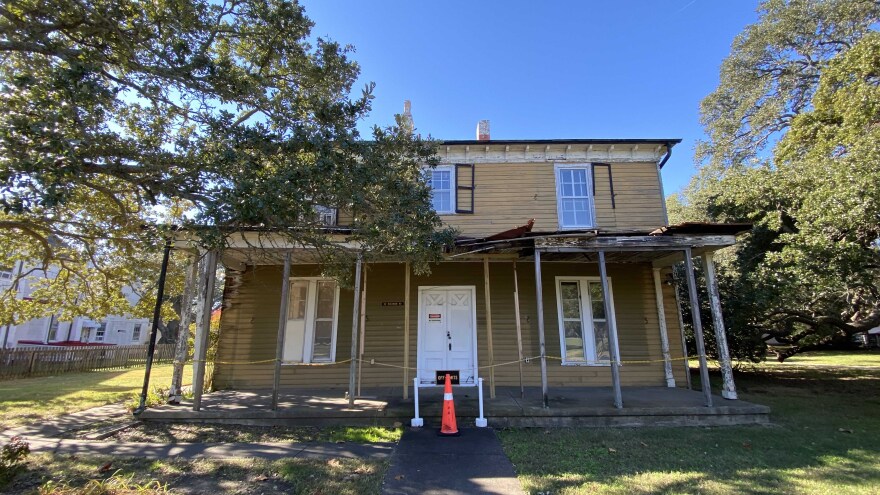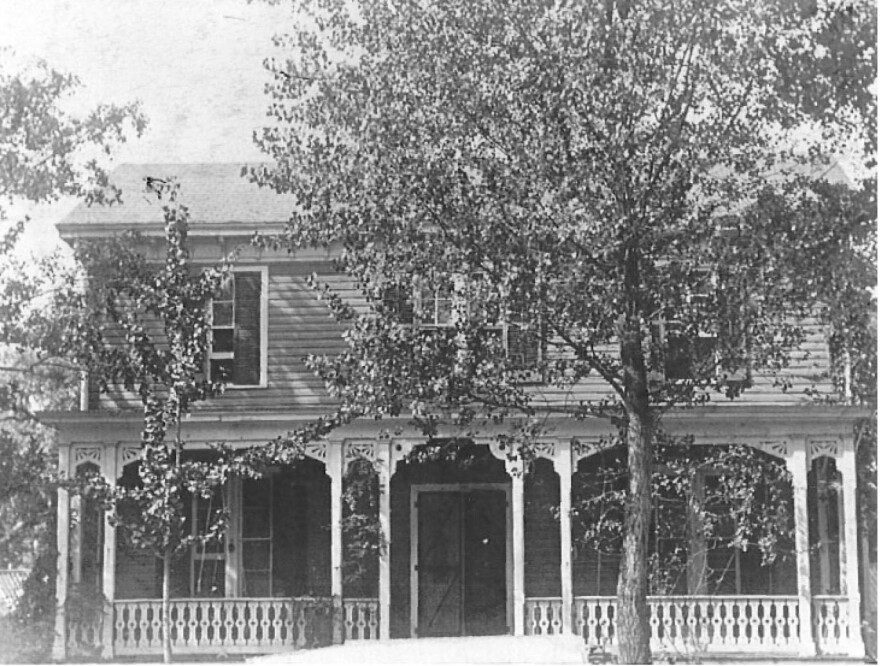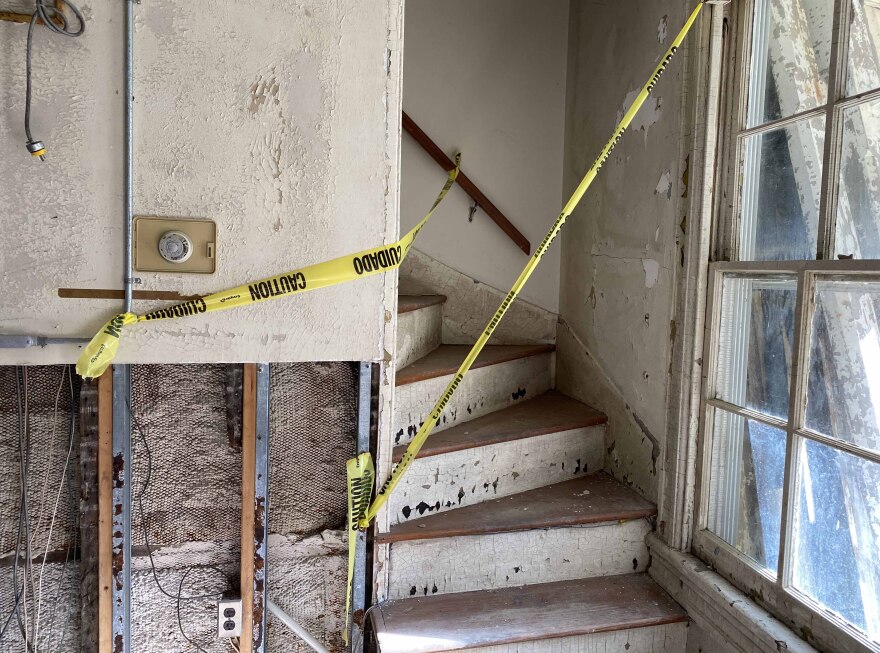Walking past Building 14 on Fort Monroe, you might not have much hope for its survival.
Siding on the building is burned or peeling in some places. The porch roof is collapsing. A no-trespassing sign on the front door warns of danger to visitors.
But the nondescript former officer’s quarters is one of the oldest buildings within the stone walls of the historic inner fort, and officials are working to save it.
With a new grant from the National Park Service, the Fort Monroe Authority plans to prepare the building for residential use once again.
They received about $372,000 through the park service’s Save America’s Treasures program to help with the project.
“While it looks like it’s in a very rough state, there’s a lot of historic fabric that’s still retained in this building,” said David Stroud, the fort authority’s historic preservation officer. “It retains its character and is a contributing element to the footprint of the National Historic Landmark District.”
Building 14 was built as a single-family officer’s quarters in 1880 for about $5,000. It was part of a nationwide Army building campaign that started in 1874.
The home is in the Folk Victorian vernacular style, which is often characterized by brick or clapboard siding, a two-bay facade, a front gable roof and a front porch.
Forty-five officers lived there over the years. Perhaps the most notable resident, according to fort historians, was Major General Ivan L. Bennett in the early 1930s.
He later served as chief chaplain of U.S. Army Forces in the Pacific during World War II and Chief of Army Chaplains shortly afterward.
In 1971, several four and eight-inch cannonballs were found behind the building, 10 feet underground.
But it’s been unoccupied for decades. Years of damage from catastrophic events – and time – left their mark.
Lightning struck Building 14 in 1975, and fire followed. It was an annex for the nearby Casemate Museum until it suffered more damage from Hurricane Isabel in 2003.
“The termites have had a field day with this building,” said Greg Rutledge, an architect with Norfolk-based Hanbury who’s leading the preservation project.
Unoccupied buildings deteriorate quickly, he said.
“It’s been empty for as long as I can remember,” Rutledge said. “So that doesn’t help it.”
Another challenge for Building 14 is rising waters. The rehabilitation will lift the home by about six to eight bricks — a little over a foot — and replace the foundation.
The restoration will also return original windows to operable use and recreate the original Victorian porch, which was replaced with a concrete slab.
The home will get amenities for modern residents, such as a brand-new kitchen.
Stroud and Rutledge walked through and around the building on a recent morning, pointing out the architectural clues that help determine which features are original versus updated at various points in the building's life.
Different cabinet textures and designs indicate different time periods, for example. The original Dutch siding peeks out from an outer layer that was added at some point and will be repaired.
Officials expect the project to start in the spring and take up to a year and a half once they choose a contractor.
They’re also rehabilitating a few other nearby buildings and have requested several million dollars from the state legislature, Stroud said.
He said he likes to think about the important features they’re leaving in place for future historians.
“Preservation is more about looking to the future than looking to the past.”






